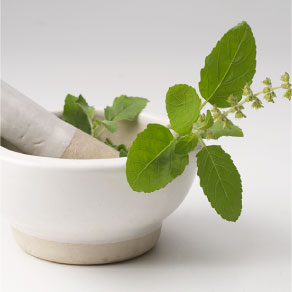HEALTH BENEFITS OF GINSENG ,GINSENG ROOT BENEFIT,GINSENG USES,MEDICAL USE OF GINSENG,GINSENG MEDICINE BENEFIT,MEDICINE BENEFIT OF GINSENG.
The Far Eastern concept of Yin and Yang has long been used as a foundation for good health and balance in the lives of millions through the ages. According to Chinese tradition, all things have
Yin (passive) and
Yang (active) attributes, and achieving balance between the two opposing conditions is the key to harmonious existence.
Ginseng is an ancient stable of traditional Chinese and herbal medicine, and is a cornerstone in the Yin-Yang concept. Though the actual science of Yin and Yang is quite complex, generally speaking one can balance lack of energy or motivation (a Yin condition) by consuming a substance of Yang nature like ginseng. Sometimes too much tension and activity, consumption of a Yang substance, like ginseng, is helpful and restorative to the inner balance.
In general plant researchers agree that ginseng is a powerful adaptogen. An adaptogen is a nontoxic substance that helps to increase resistance against stressful influences of a physical, chemical, or biological nature; and in general, it has a normalizing effect. These attributes are believed to be achieved through ginseng’s ability to stimulate functions that regulate the central nervous system, the cardiovascular system, and endocrine glands.
STUDIES SHOW THAT GINSENG:
~Counteracts effects of physical and emotional stress
~Enhances memory
~Stimulates the immune system
~Spurs production of body's own virus-fighting chemicals
~Helps reduce cholesterol levels in blood
~Has anti-clotting effects, reducing the risk of arterial blood clots
~Helps control diabetes by reducing sugar levels
~Antioxidant, preventing cumulative cell damage believed to culminate in cancer
~Protects the liver from effects of drugs, alcohol and toxins
~Minimizes cell damage from radiation
~Counteract fatigue without caffeine and improves stamina
~Increases intestinal absorption of nutrients
EXPERIMENTS DONE ON GINSENG:
Energizing Studies Over the past 50 years, scientific studies have concentrated on the chemistry, pharmacology, and clinical aspects of ginseng use. It is the most researched medicinal herb on the face of the earth. The Russian pharmacologist, Dr. I. Brekhman, was the first to show proven clinical results for humans taking ginseng. In 1948, 100 soldiers ran a three-kilometer race in Vladivostok. Half of the group received ginseng extract, and the other half received a flavored placebo. The ginseng group averaged 53 seconds faster than the placebo group (Zen-Shen, Leningrad, State Publishing House of Medical Literature, 1957).
Studies, which were done with wireless operators and telegraphers for mental concentration and coordination, showed that individuals taking ginseng made fewer mistakes and were able to transmit text significantly faster than those given a placebo (Papers on the Study of Ginseng and Other Medicinal Plants of the Far East, Vladivostok, 1963).
In England, a double-blind, placebo-controlled, crossover study was performed on nurses undergoing shift work. Dr. Stephen Fulder and his colleagues studied British nurses in a London hospital during regular periods of night duty. Korean white ginseng (1200 mg.) or a placebo in capsule form was given under double blind conditions to 12 nurses of both sexes on three consecutive days before night duty. The nurses who took ginseng felt more alert and tranquil during their work and performed better during a test of speed and coordination (Proceedings of the International Ginseng Symp., Ginseng Research Institute, 1974: 81 - 85).
A FEW MORE STUDIES SHOW ON GINSENG:
Topic: Ginseng and cold tolerance
Source: Dr. Larry Wang, University of Alberta, Department of Zoology, 1994
Interested in the possibility of using ginseng to minimize cold stress, Dr. Wang and his Traditional Medicine Research program undertook to isolate Ginsenosides and their selected individual components RB1 and Rg1 from North American Panax quinquefolius, using modern chromatographic techniques developed by the TMRP team.
Laboratory rats were exposed to cold for two hours, their metabolic rates, as measured by oxygen consumption and carbon dioxide production were continuously monitored. Change of rectal temperature before and after the exposure was also recorded. Metabolic and thermoregulatory performances of the rats was compared between experimental (Ginsenoside) and control (distilled water) treatments. Results indicated that feeding rats with a single dose of Ginsenosides at 100mg/kg was able to significantly improve their cold tolerance, the rats were able to generate heat at a greater rate, sustain it more effectively, and keep themselves much warmer.
Dr. Wangs studies on rats provide insight that Ginsenosides enhance cold tolerance. It is felt that the warming effects of Ginsenosides are equally applicable to humans. In china, the elderly have traditionally used ginseng root to keep warm in the winter.
Stimulant
Instead of caffeine or amphetamines for tiredness and exhaustion (i.e. from overwork, insomnia, "hang-over'), long distance driving, stage performance, athletic performance and strenuous physical work.
Tonic
A long term restorative benefiting health from gradual and continuous use. Helps in the convalescence from disease and helps overcome tiredness.
Mental benefits
Improves mental states in elderly. Recommended for depression, insomnia, and is said to improve one's spirit's and improve outlook on life. Other general effects include assisting memory loss, concentration, alertness, and improving learning ability.
Anti-Stress
Helps to resist long-term effects of stress damage to one's blood system and digestion.
Regulating Blood Pressure
Clinical test with elderly patients having high blood pressure showed that ginseng produced a small reduction in blood pressure. Ginseng is safely taken by those with cardiovascular disorders and can be taken in addition to prescribed drugs without risk of incompatibility.
Sexual function
Reputation as an aphrodisiac because it increases general vitality. Ginseng may have an effects on the sexual glands as a part of its overall effect on the hormones of the body.
Menopause
Reduces and prevents side effects of menopause. Increases the regulation of hormones and may be taken by women at an early age in order to increase their resistance capacity and to prevent possible menopausal disorder.
NOTE:
One of the most common and characteristic symptoms of acute overdose of Panax ginseng is bleeding. Symptoms of mild overdose with Panax ginseng may include dry mouth and lips, excitation, fidgeting, irritability, tremor, palpitations, blurred vision, headache, insomnia, increased body temperature, increased blood pressure, edema, decreased appetite, increased sexual desire, dizziness, itching, eczema, early morning diarrhea, bleeding, and fatigue.
Symptoms of gross overdose with Panax ginseng may include nausea, vomiting, irritability, restlessness, urinary and bowel incontinence, fever, increased blood pressure, increased respiration, decreased sensitivity and reaction to light, decreased heart rate, cyanotic (blue) facial complexion, red facial complexion, seizures, convulsions, and delirium.
Patients experiencing any of the above symptoms are advised to discontinue the herbs and seek any necessary symptomatic treatment.






















